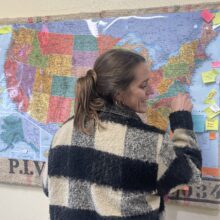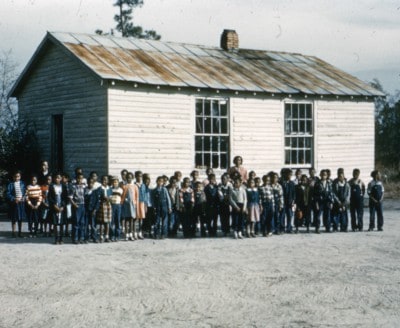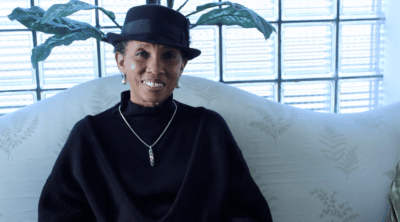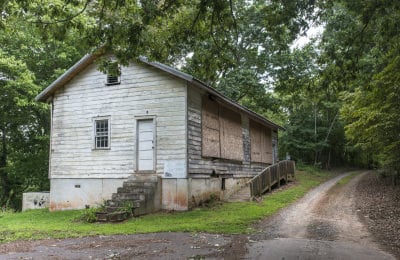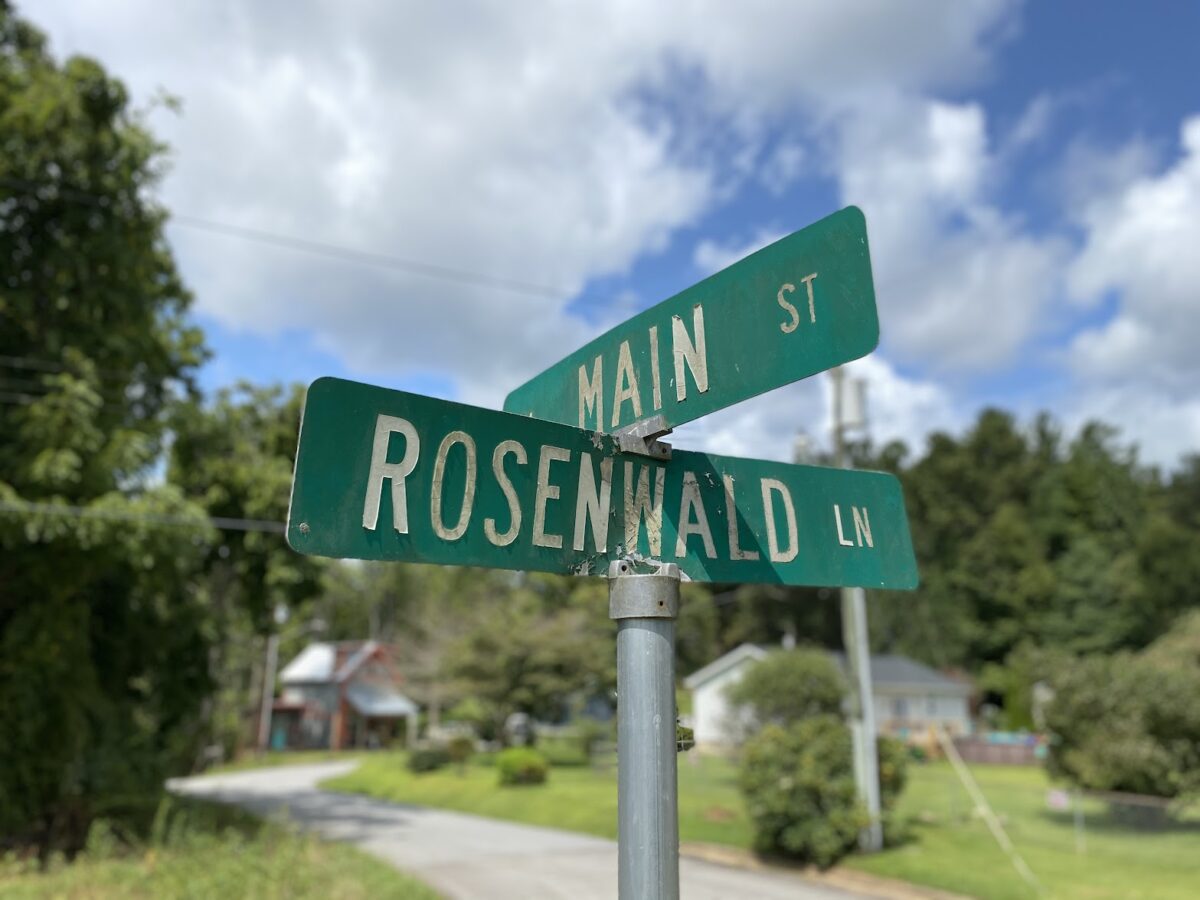

Share this story
- What is a Rosenwald school and why are they so important? Check out the documentary, “Unlocking the Doors of Opportunity: The Rosenwald Schools of North Carolina."
- According to @SavingPlaces, by 1928 one third of the South’s rural Black school children & teachers were served by a Rosenwald school. Watch "Unlocking the Doors of Opportunity: The Rosenwald Schools of North Carolina" here.
|
|
On Feb. 16, a viewing of the new documentary “Unlocking the Doors of Opportunity: The Rosenwald Schools of North Carolina” was held at the North Carolina Museum of History in downtown Raleigh.
A panel discussion followed the showing, featuring the filmmakers of Longleaf Productions, Tom Lassiter and Jere Snyder, Interim Vice Provost for Undergraduate Education at N.C. A&T Dr. Arwin D. Smallwood, and Rosenwald school alumnus Ben Stewart.
Rosenwald schools were born out of the Jim Crow era, as public schools for African Americans were highly underfunded. In 1883, the Dortch Act passed, allowing for the division of tax revenues for public education between Black and white citizens. With the white population owning more property than the Black population, little to no money would make its way to supporting black students or their school buildings.
Earl L. Ijames, curator of African American history at the museum, introduced the film at the premiere. He said this law was eventually thrown out by the N.C. Supreme Court but set a precedent.
“It created a literal legal color line to help to fund schools with the idea that black schools should be built with a separate fund,” Ijames said.
And this precedent leads us to the story of the Rosenwald schools.
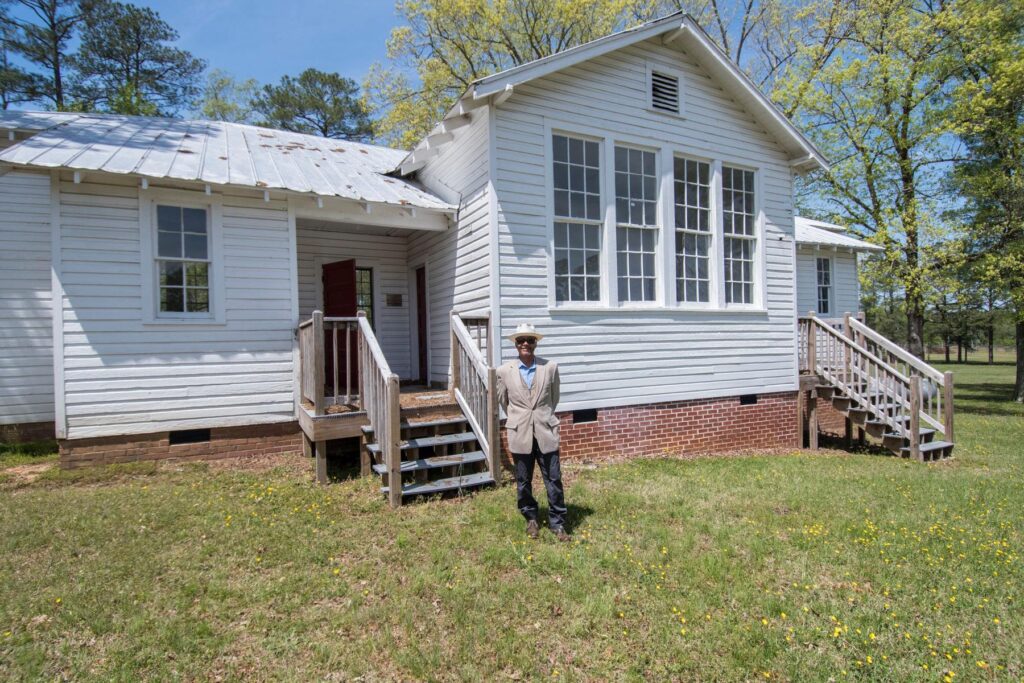

Church buildings were the central community center for African Americans, and they began acting as schools in the late 1800s. The need for dedicated school buildings was ever-growing, but the funding to create them was nearly non-existent.
Enter Booker T. Washington, founder of the Tuskegee Institute, and Julius Rosenwald, philanthropist and CEO of Sears, Roebuck, and Company. The two met in 1911 when Washington visited Chicago. Rosenwald was the son of Jewish immigrants and head of one of the most profitable companies of the time.
The two partnered and built the first pilot Rosenwald school in Loachapoka, Alabama in 1912. It was such a success they began developing plans to expand the program to other southern states.
To fund the schools, Booker and Rosenwald developed a model where the philanthropist would provide a third to a quarter of the money, state and local government would provide half of the funding, and the remainder was to come from the communities the schools would serve.
In the end, Black communities financially supported the schools more than Rosenwald, said Peter Ascoli, Rosenwald’s grandson.
Ben Stewart, who sat on the panel, attended one of the many Rosenwald schools that existed in Warren County. He lived with his grandparents, and his grandfather was a sharecropper who didn’t make enough money to qualify to pay income tax.
He said the initial cost for his school was $3,500, and the people of his community contributed $2,000. “Everybody in the community took pride in the school,” he said.
Construction of the schools was left to individual communities, but guided by the design of Robert Robinson Taylor, an African American architect who graduated from the Massachusetts Institute of Technology. His buildings featured excess windows and moveable walls or partitions.
From the 1910s into the early 1930s, more than 5,300 school buildings were constructed in African American communities throughout 15 states across the South. North Carolina was home to more Rosenwald schools than any other state in the nation.
According to the National Trust for Historic Preservation, by 1928 one third of the South’s rural Black school children and teachers were served by a Rosenwald school.
National Trust for Historic Preservation, “Rosenwald Schools”
